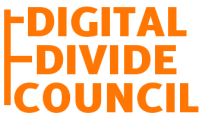Bridging the Digital Divide: The Role of Technology in Connecting Communities
The digital divide is a significant issue that affects communities around the world. It refers to the gap between those who have access to modern information and communication technology (ICT) and those who do not. This divide is not just a matter of connectivity but also encompasses access to devices, digital literacy, and the skills needed to navigate an increasingly digital world. As society becomes more reliant on technology, the digital divide has profound implications for education, employment, healthcare, and social inclusion.
Understanding the Digital Divide
The digital divide can be categorized into three primary levels:
- Access to Technology: This is the most visible aspect of the divide. It includes disparities in access to high-speed internet, computers, and smartphones. Rural and low-income communities often face challenges in accessing these essential tools, leaving them at a disadvantage in a technology-driven world.
- Digital Literacy: Even when technology is available, not everyone has the skills to use it effectively. Digital literacy involves the ability to use devices, navigate the internet, and engage with digital platforms safely and responsibly. A lack of digital literacy can limit individuals’ ability to participate fully in the digital economy and society.
- Meaningful Use of Technology: This aspect of the digital divide looks at how technology is used. While some people use digital tools to access education, healthcare, and employment opportunities, others may only use them for basic communication or entertainment, limiting the potential benefits of being connected.
The Impact of the Digital Divide
The digital divide has far-reaching implications for individuals and communities. Here are some of the key areas affected:
1. Education
The COVID-19 pandemic highlighted the digital divide in education, as schools around the world shifted to online learning. Students without access to reliable internet or digital devices struggled to keep up with their peers, exacerbating existing educational inequalities. Ensuring that all students have access to the necessary technology and digital literacy skills is essential for closing the educational gap and providing equal opportunities for success.
2. Employment Opportunities
In an increasingly digital economy, access to technology and digital skills are critical for finding and securing employment. Many job applications, interviews, and training programs are now conducted online. Individuals without digital access or skills are at a significant disadvantage, limiting their ability to participate in the job market and advance their careers.
3. Healthcare Access
Telemedicine and digital health services have made healthcare more accessible for many, especially during the pandemic. However, those without internet access or digital literacy are less likely to benefit from these services. Bridging the digital divide in healthcare is essential to ensure that all individuals can access the medical care they need, regardless of their location or economic status.
4. Social and Civic Engagement
Digital platforms play a crucial role in enabling social and civic participation. From accessing government services to engaging in online communities and political discourse, digital tools help individuals stay informed and involved. The digital divide can lead to social isolation and disenfranchisement, particularly for those in underserved communities.
Strategies to Bridge the Digital Divide
Addressing the digital divide requires a multifaceted approach that includes improving infrastructure, enhancing digital literacy, and ensuring that all individuals have access to affordable technology. Here are some key strategies to consider:
1. Expanding Internet Access
Investing in infrastructure to expand broadband access in underserved areas is a critical step in closing the digital divide. Public-private partnerships can help bring high-speed internet to rural and low-income communities, ensuring that everyone has the opportunity to connect to the digital world.
2. Promoting Digital Literacy
Digital literacy programs are essential for helping individuals develop the skills they need to use technology effectively. These programs should be accessible to people of all ages and backgrounds, providing training in basic digital skills, online safety, and more advanced competencies needed for education and employment.
3. Providing Affordable Devices
For many low-income families, the cost of digital devices such as laptops, tablets, and smartphones can be prohibitive. Programs that provide affordable or subsidized devices can help ensure that everyone has the tools they need to participate fully in the digital world.
4. Supporting Community Initiatives
Community-based initiatives can play a crucial role in bridging the digital divide. Local organizations, libraries, and schools can provide access to technology and digital literacy training, helping to empower individuals and strengthen communities.
The Role of Technology Companies
Technology companies have a significant role to play in addressing the digital divide. By developing affordable solutions, supporting digital literacy initiatives, and partnering with local communities, these companies can help create a more inclusive digital future. For example, Executech provides IT support and technology solutions that help businesses and communities access the technology they need to thrive. By working with organizations like Executech, communities can build the infrastructure and skills necessary to close the digital divide and create new opportunities for growth and development.
Conclusion
Bridging the digital divide is essential for ensuring that everyone can participate fully in the digital world. By expanding access to technology, promoting digital literacy, and supporting community initiatives, we can create a more equitable and inclusive society. As technology continues to advance, it is crucial that we work together to ensure that no one is left behind.
